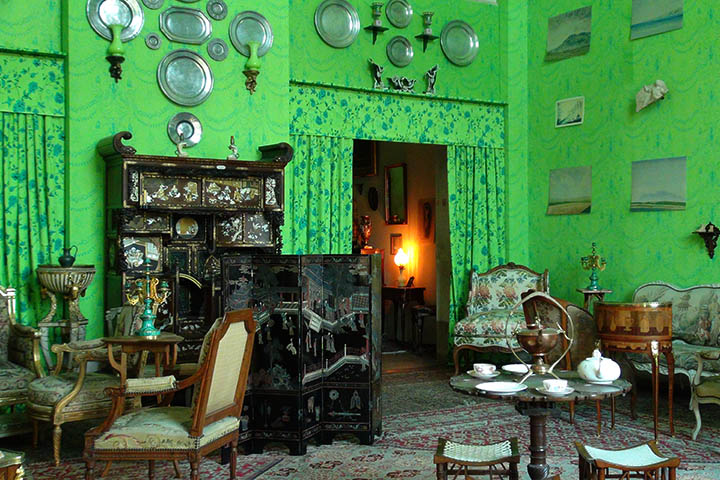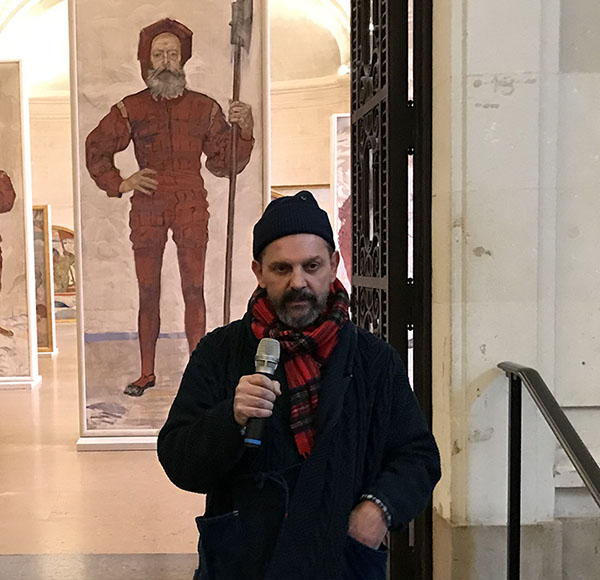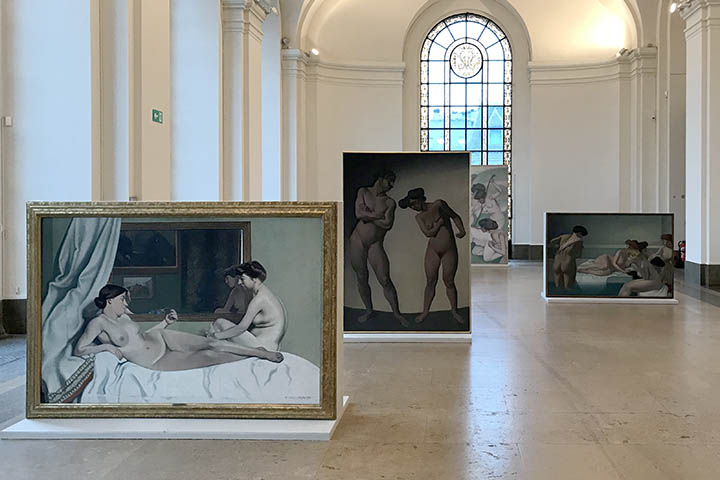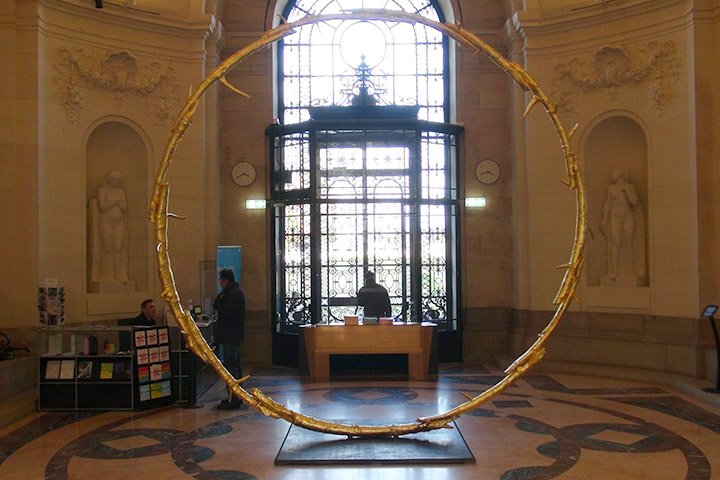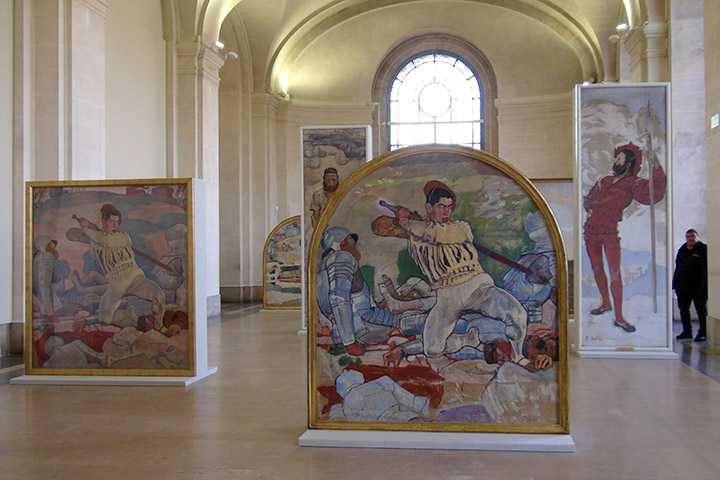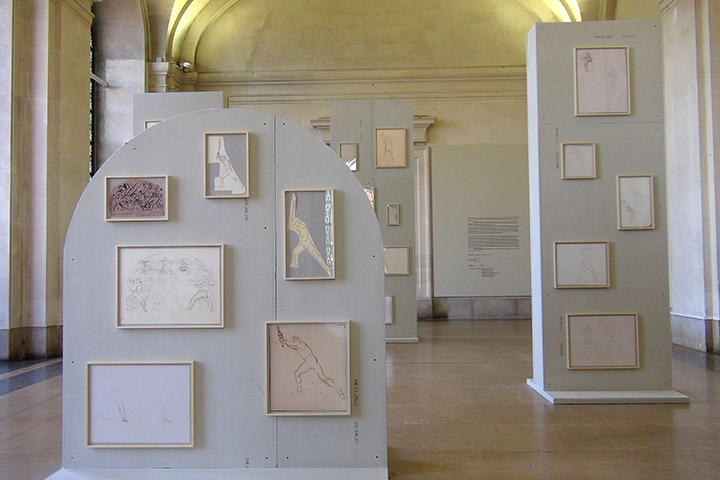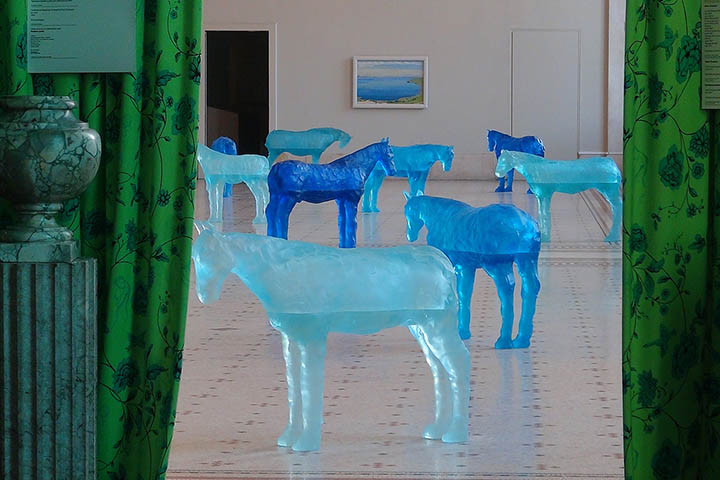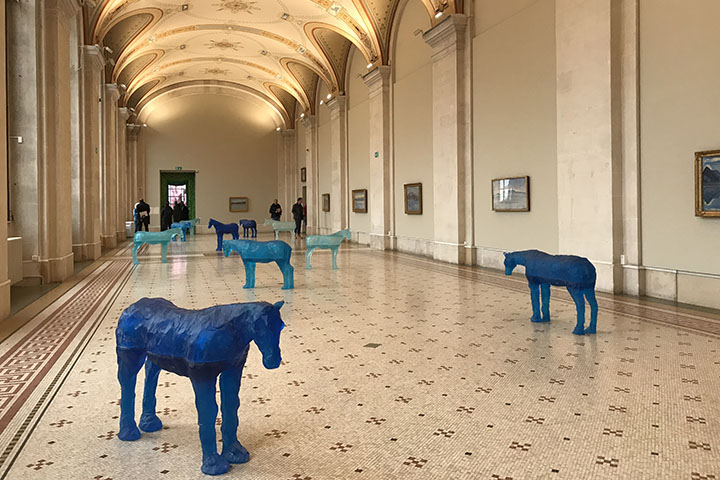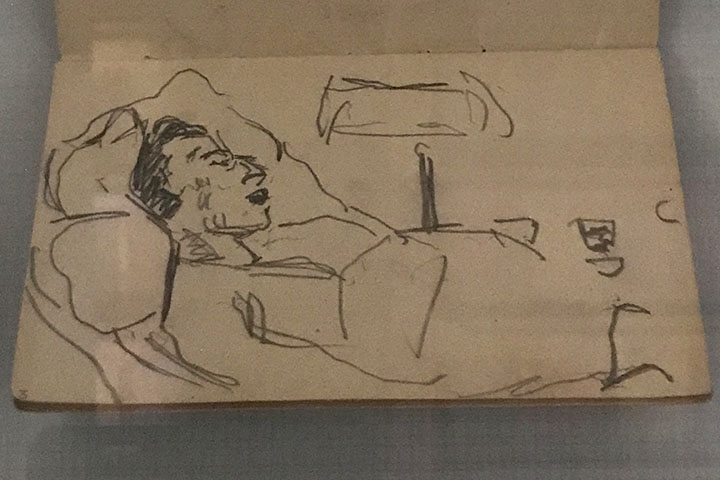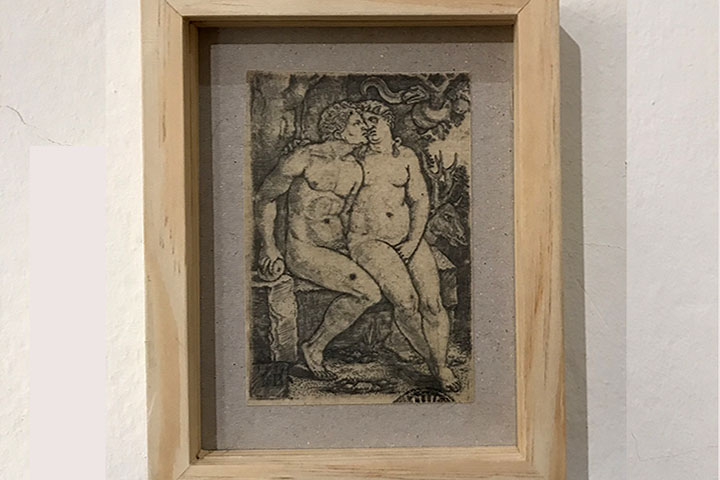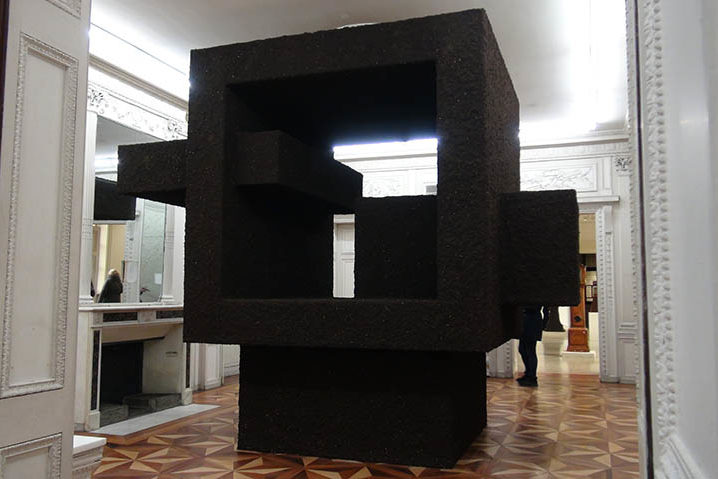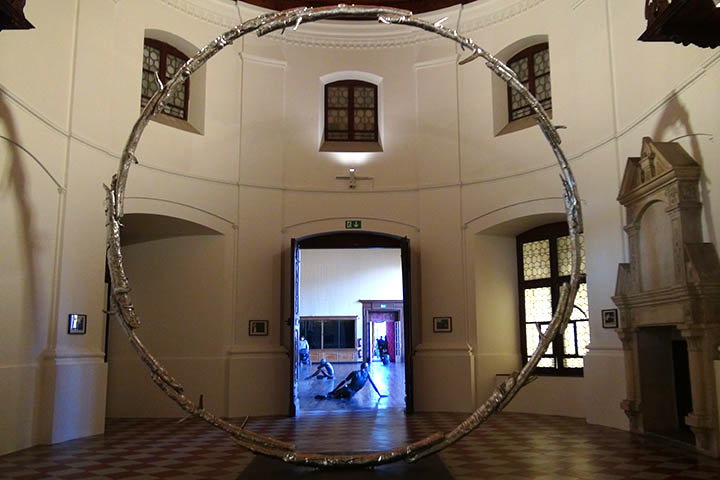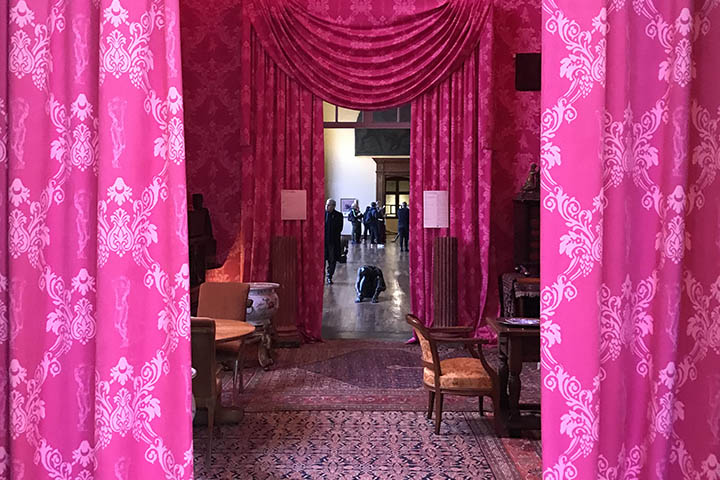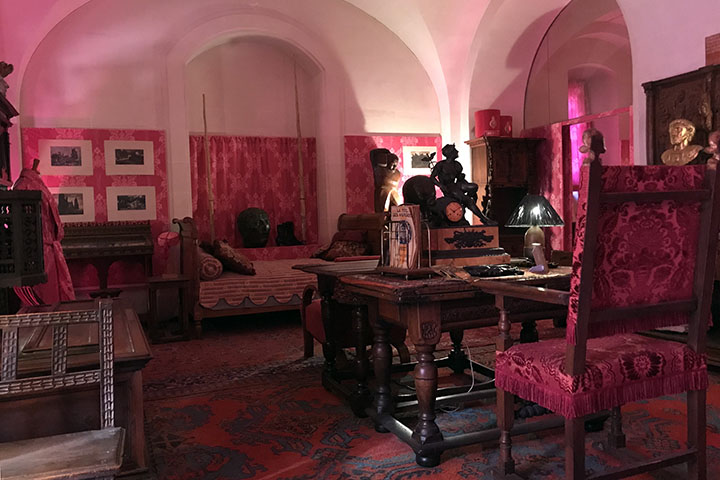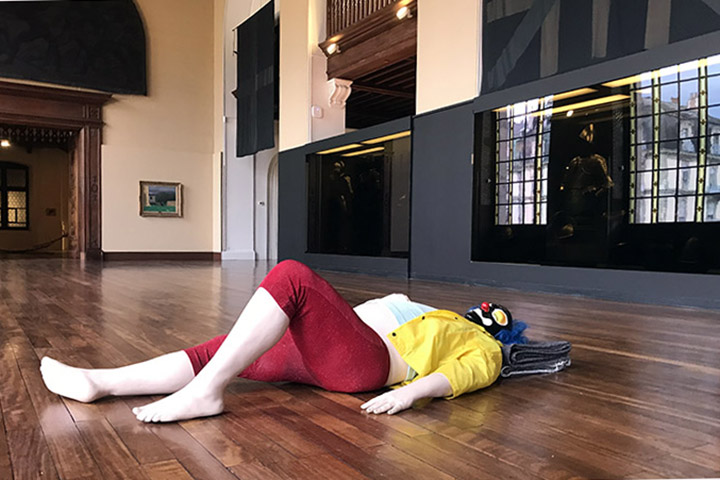The artist Ugo Rondinone has created the third installment of the carte-blanche series implemented by the Museum of Art and History in Geneva. It can be seen until June 18, 2023.
Text by Claude-Hubert Tatot.
After passing through the large sun circle that opens the exhibition, men are to the right and women to the left. Warriors in armor, painted larger than life by Hodler, naked women, often reclining, by Vallotton.
Rondinone places the paintings on the floor on terraces, leaning against narrow backboards on which their preparatory drawings are hung. Two evocations of delightfully eclectic and cluttered interiors, green for Hodler, red for Vallotton, present objects and furniture from encyclopedic collections. These playful stagings orchestrated by architect Frédéric Jardin and Rondinone replay the workshop of a pompier painter as much as a Cocotte interior. It is pure fiction, a narrative construction. On either side, these fake apartments open onto the museum’s real toilets.
Rondinone also makes his own works converse with those of these two giants of Swiss painting. Animal sculptures in glass, small blue horses half-filled with waters from different seas in front of Hodler’s lake landscapes share colors and horizontal partitions. In the armor room, whose display cases and flags are veiled in black tulle, a clown, a grotesque figure of melancholy, is lying on the ground, surrounded by Vallotton’s landscapes and bouquets.
Valentine’s dying drawings, which Hodler drew daily, succeed the horizons. On Vallotton’s side, there is a large circle, like the sun at the entrance but silver, a moon circle that accompanies his wood engravings, Intimacies, sharp prints on bourgeois couple’s lives. Adam and Eve, also wood-engraved by Dürer or sculpted by Rodo, share the same room as clocks, pedestal-like sculptures. This simple juxtaposition succinctly expresses the lost paradise, our lives subject to death and the time allotted to us. The next three rooms are each filled with a single abstract, monumental sculpture, an assemblage of geometric forms from minimal vocabulary but flocked with earth.
Under the guise of strong contrasts and simple things – water, earth, light, sun and moon, men and women, painting and sculpture – Rondinone turns this exhibition into a true installation and proposes a different way of looking at things. The paintings are in the middle of the rooms like sculptures, with the drawings on the back explaining their development. The clocks have left the chimneys or dressers and are also presented as sculptures. Objects are hidden behind veiled display cases and two rooms, one bright and colorful, the other dark, are only revealed by passing through a door that opens by itself. A real hodgepodge that requires attention to go beyond an overview and enter into detail, a photomontage of false intimacy between men and real stagings respond to each other. The whole thing, a real trap for the eye, leaves ample room for the viewer, joyfully engaging them to make connections and enjoy the pleasure of seeing.
Claude-Hubert Tatot.
Texte original en français : https://www.geneveactive.ch/?p=24024
when the sun goes down and the moon comes up
Musée d’art et d’histoire. Genève.
January, 26 – June, 18.

